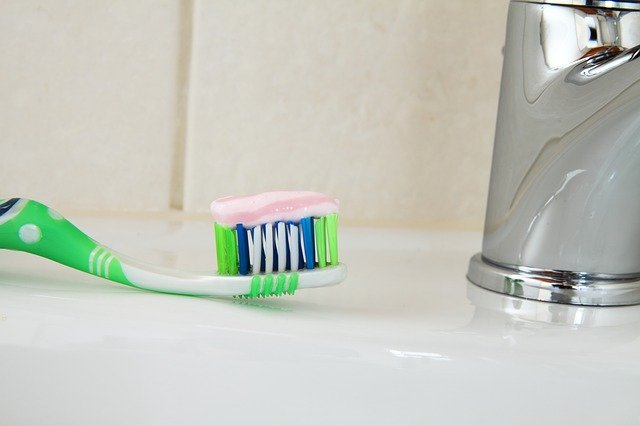Photograph by PublicDomainPictures
To have healthy teeth, it is advisable to avoid goodies, brush teeth and use fluoride toothpaste.
What is fluoride?
Fluoride is a mineral that strengthens, helps the renewal of tooth enamel and prevents tooth decay.
But too much fluoride is also not advisable since it can produce fluorosis, which stains the teeth in their mild form, but which, if severe, can destroy the enamel. As in other situations in medicine, it is not always better: you have to find the intermediate point to avoid caries without producing fluorosis.
How can it be applied?
We can find fluoride as an ingredient in toothpaste, gels, and varnishes for teeth and rinse liquids. Also in drops or pills to take and, in some countries, in the drinking water.
Topical fluoride (on the tooth) is the one we put on the brush with the toothpaste, that of the rinses with unique products for it, and that of the treatments that once or twice a year the dentists apply in some cases.
Currently, experts do not recommend administering the fluoride taken in almost no case, and only if the drinking water in your area has less than 0.3 ppm (parts per million) of fluoride. This type of fluoride should be recommended by the dental doctor near me.
Dental treatments with fluoride gels or varnishes are treatments that the dentist applies in his office, only to children at risk.
In the most recent studies, it has been concluded that the local effect of fluoride directly on the tooth is the one that prevents tooth decay.
And that the fluoride in general, ingested, that reaches the tooth through of the blood. It is essential only before the tooth comes out when it is mineralizing inside the gum, but it is also in this phase, the one before the dental eruption, when if there is an excess of fluoride, the fluorosis.
When the effect of fluoride in caries prevention was verified, and the optimal amount in water was known (1 part per million or 1 mg per liter), in some countries, such as the United States, fluoride began to be added to the water of drink.
The problem is that the amount of water a person drinks varies greatly depending on the heat of the area, their customs, etc. and there are other sources of fluoride, such as foods grown in areas with fluoridated waters, mineral waters, beverages, dentifrices (which are ingested in part). For this reason, fluoride has not been added to drinking water in many other places.
Which children are more at risk of caries?
When we review the tables in which they are listed, we see that many of these risks can be avoided with changes in habits: sweeten pacifiers, drink sweets and goodies, drink juices. Therefore, the most sensible thing is to suppress these harmful habits in the first place.
They remain at risk and, therefore, have an indication of fluoride being treated by a dentist around me or taken the following:
– Children who have active cavities (3 in baby teeth or 1 in definitive teeth).
– Children with malformations of the mouth.
– Children with fixed orthodontics (braces).
– Children with mental deficiencies that hinder their hygiene.
– Children at particular risk if there were cavities (heart disease, immunity problems or hemophilia, for example)
– Other children, those who do not consider caries risk, will apply fluoride in the toothpaste, and, if they are older, they can also do daily or weekly rinses.
How much toothpaste and which one?
Children from 0 to 3 years: from the start of the first tooth, toothpaste cleaning with 1000 ppm of fluoride ion should be started, twice a day, one of them at night. It will be done with gauze, silicone finger, or toothbrush appropriate to the child’s size. The amount of paste will be like a grain of rice. Since the milk wheels come out, additional hygiene with dental floss will begin.
Children from 3 to 6 years: The amount of paste will be equivalent to a pea. It can be with 1000 to 1450 ppm of fluoride ion (depending on the risk of caries of the child).
Tooth brushing should always be performed by an adult until approximately 8 years of age and from there supervised until adolescence. Additional hygiene with dental floss is recommended.
From 6 years of age: the amount of toothpaste with 1450 ppm of fluoride ion will be equivalent to a pea. Depending on the risk of caries, the fluorine ion concentration of toothpaste can be up to 5000 ppm (only if the pediatric dentist indicates it). Additional hygiene with dental floss is recommended.
After tooth brushing, it is recommended to spit the paste to avoid ingesting it, but not rinse it with water to get a more significant effect of fluoride on the tooth.
by Akshay Sharma
Knowledge Knows No Bounds: Join Our Cause, Donate to Our Blog Today!


